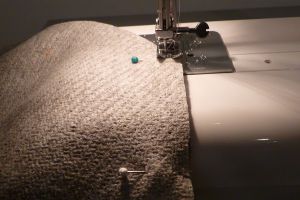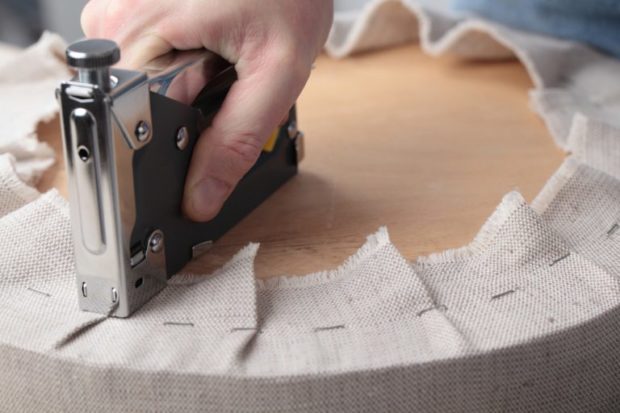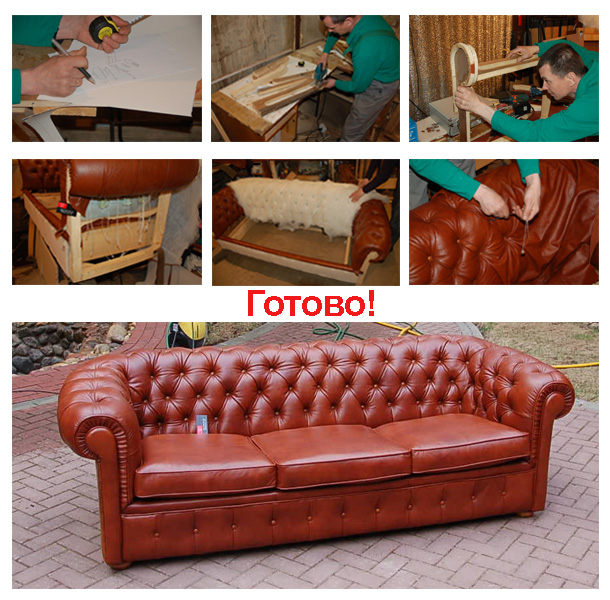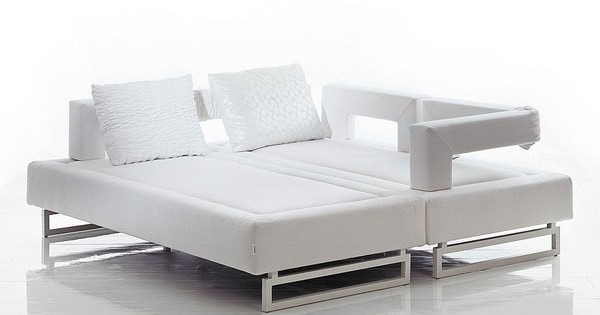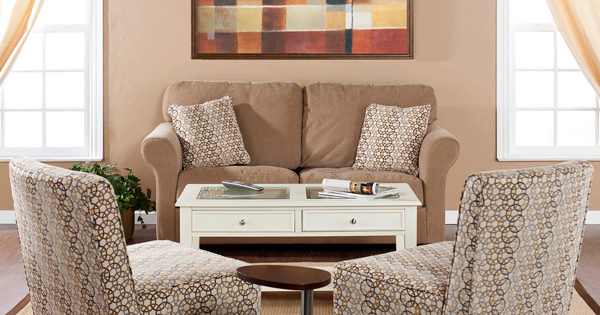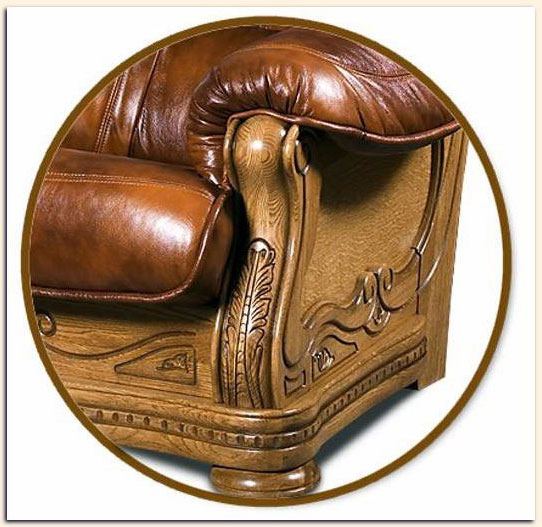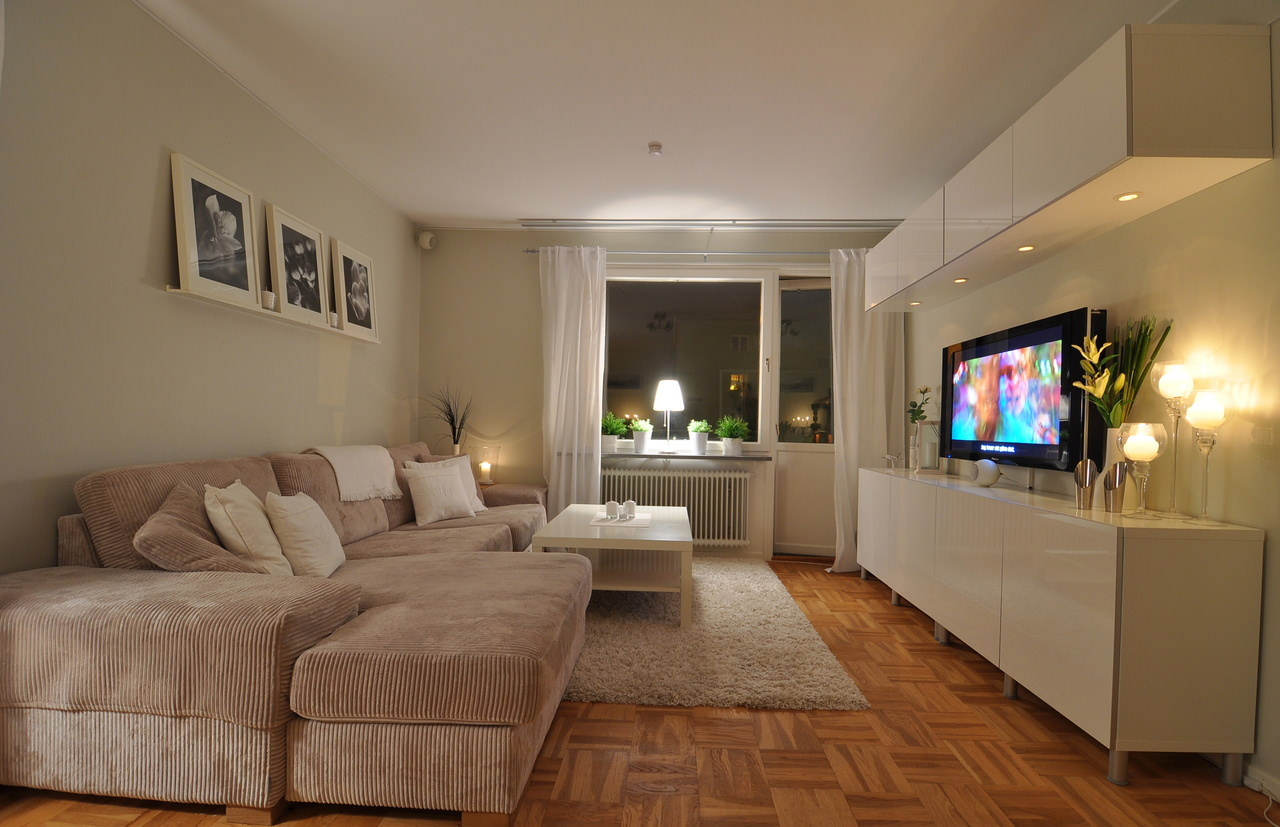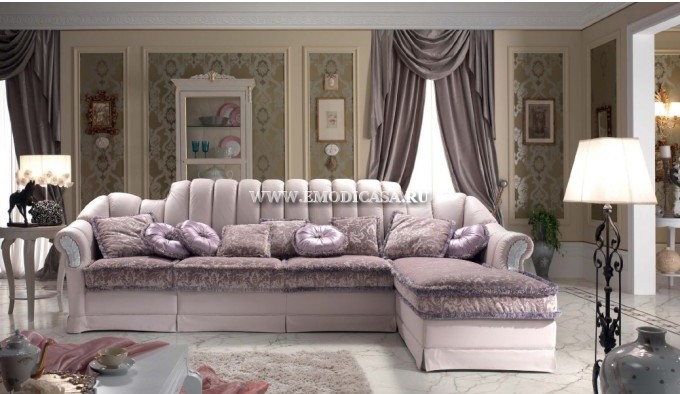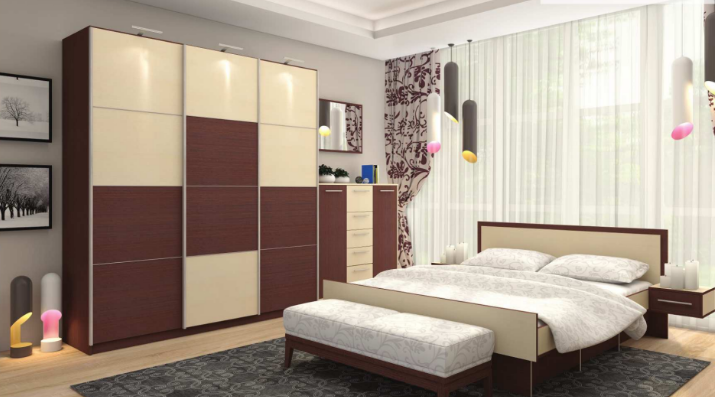8 Tips for Doing Your Own Sofa
Sofa - the main element in the living room, which emphasizes its interior, which means that its appearance should always be attractive. Shabby upholstery will not give chic to the room. Unfortunately, no one is safe from the appearance of characteristic shortcomings, especially considering the significant and regular loads that this piece of furniture is experiencing. In this case, wear occurs naturally. But it also happens that pets will irrevocably spoil the upholstery. In both cases, replacements cannot be avoided. It often happens that hauling furniture at a cost is almost equivalent to buying a new one. To help you save your family budget, in this article we will giveuseful tips, how to carry out the constriction of the sofa with your own hands.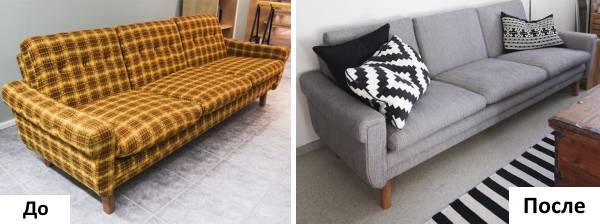
1. Where to start?
Before embarking on such a responsible matter, and even without the necessary experience, you should appropriately assess the situation and understand whether your sofa is really worth giving in to the constriction. There are cases when furniture already resembles a wreck, but throwing it away is a pity. But at the same time, all the households are just waiting for the moment when something will finally break down for him, so that there definitely appears a reason to take him to hell. In such cases, even an independent restoration at a cost will reach the price tag of a new piece of furniture. Therefore, do not go to extremes. An exception is the case when the sofa is expensive as a heirloom or is a subject of antiques. There are several more situations where worth refraining from a manual replacement, for example:
- When the cost couch very high and there is a high probability of spoiling it;
- When the sofa is too complex;
- When self-dismantling of furniture is not possible due to too sophisticated assembly;
- When the service life of the product is so great that on the face of the deformation of the frame and the spring block;
- When you have chosen too thick or specific fabric for the new upholstery, only professional furniture makers can cut out and fix it.

If, however, a clear decision is made to act, it will be necessary to go through all the time-consuming restoration processes namely:
- Dismantling of an old piece of furniture into separate elements;
- Complete removal of worn upholstery, and sometimes filler;
- Thorough inspection of the frame, spring unit and other details;
- The choice of new upholstery;
- Cutting upholstery;
- Fastening the fabric to individual pieces of furniture;
- Reassemble the structure.
Consider in more detail, taking into account key tips from manufacturers of cabinet furniture and specialists in restoration and hauling.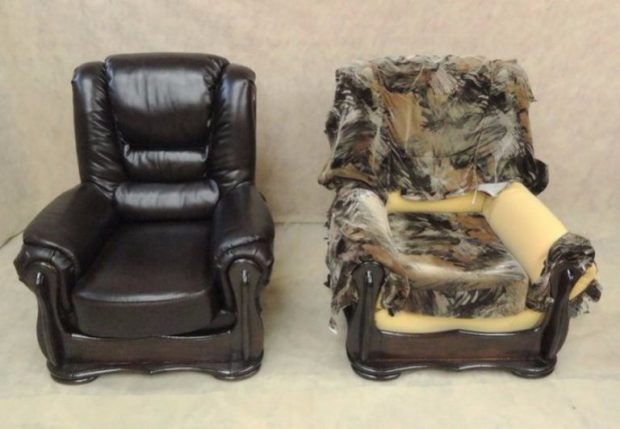
2. Stage I - disassemble the old sofa
If your sofa is a standard configuration, the process will not cause difficulties and will last an hour from the strength. That everything was quick and organized, first of all, you need to prepare everything necessary tools:
- You definitely can not do without a set screwdrivers;
- A set of keys for nuts or bolts;
- For lack of keys, pliers will do.
Dismantling must begin with the elements whose fastenings are in sight.Usually these are the sides of the sofa, after unscrewing which, nuts are found that secure the lifting mechanism. After removing the mechanism, you can detach the backrest and seat. If the sofa has legs, you can start disassembling them. At this stage, it is very important to keep all fasteners intact. If in some places the parts are interconnected using grooves and protrusions, do not make sharp jerks so as not to break them.
Required memorize the sequence their actions. After all, you have to assemble the furniture in the reverse way. It is important to remember, and which of the fasteners connected this or that part of the sofa. Otherwise, at the end, it may turn out that this bolt is not suitable in length, and the desired one is already hidden somewhere under the sidewalls. We'll have to disassemble everything again.

3. Stage II - remove the old upholstery
When a sofa appears in front of you in the form of separate spare parts, you must carefully remove all the old and lost their attractiveness and functionality. Be prepared for the fact that you have to get rid of more than one hundred brackets from a furniture stapler. This process can be very painstaking and annoying if you do not cook the whole required tool:
- First of all, the bracket will need to be pry off with something, a thin flat screwdriver is suitable for this;
- Now it needs to be removed, for this pliers or round-nose pliers will fit;
- Perhaps a clerical knife is useful.
The work will progress much faster if you first attach all the brackets to each part and then remove them. No time will be lost on changing the working tool. In order not to find staples later in the most unexpected corners of the apartment and not get injured, immediately prepare a garbage bag.
When removing fasteners, be careful not to cut the fabric itself. At the stage when you need to cut a new upholstery, you can use the old fragments as patterns. Under the cloth you will find filler. It can be foam rubber and other materials. In older models, the filler often fills the space between the springs. You need to carefully pull it out.
Getting to the beginning of this stage, after you have prepared the necessary tools, we recommend that you cover the area of the floor on which you will work with oilcloth. The old filler can simply crumble in your hands, turn into dust, which will quickly spread throughout the apartment. There will be a lot of garbage.
4. Stage III - visual inspection and identification of problem areas within the structure
There is no point in wasting time and energy replacing the upholstery if the sofa inside is damaged. A beautiful fabric will not hide the pits that are formed due to the fact that the filler loses its density. It will not hide the sagging structural elements that are a consequence of the stretched spring block. It is for this that it is necessary to completely clean the frame from all that is superfluous - so that to find and troubleshoot. Under the filler you will find springs or mesh, or belts. All these components, including the joints of the wooden frame itself, must be carefully examined. If springs stretched belts burst and torn, and metal or nylon extensions do not fulfill their functions, it is all necessary to replace with new parts. Very often springs burst in the middle of the seat.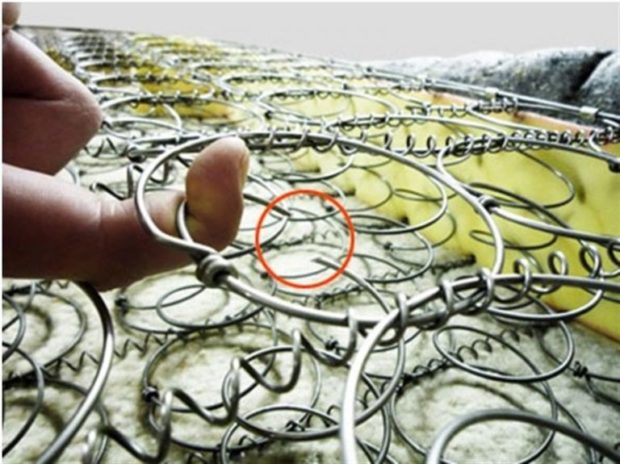 If you find cracked wooden crossbars they also need to be replaced without fail. To do this, choose well-dried wooden beams without knots and cracks. The presence of such defects will serve as stress concentrators, and soon the crossbar will burst again under heavy load. A raw tree, gradually drying up under the influence of temperature in the apartment, will be deformed, which can cause a skew of the whole frame.
If you find cracked wooden crossbars they also need to be replaced without fail. To do this, choose well-dried wooden beams without knots and cracks. The presence of such defects will serve as stress concentrators, and soon the crossbar will burst again under heavy load. A raw tree, gradually drying up under the influence of temperature in the apartment, will be deformed, which can cause a skew of the whole frame.
Masters advise soak with PVA glue joints of new and old beams before reassembly.In older models, the frame has three jumpers from fiberboard, one in the middle and two on the sides. Very often, they also burst after many years of operation. Repairing such parts is useless. Better complete replacement. You can attach jumpers to the frame using small carnationsA faster way is to use a pneumatic stapler.
Concerning filler. In 95% of cases, it must be discarded. Instead, a worn out need to purchase new foam rubber medium or high degree of rigidity with high density. Its height should be at least 45-50 mm, and even better - 60 mm. This will not only make the seat more resilient and give it an attractive shape, but also protect internal parts from damage. To ensure a longer life of the filler itself, it is recommended to wrap it with several layers of synthetic winterizer. If you need to change the filler in the back, you can use foam rubber of a lower degree of rigidity. This will make your stay more comfortable.
Very often he blunders himself lifting gear uncharacteristic backlashes appear or springs completely fly off. If the problem persists by replacing the screw or spring with a stiffer one, you should buy a new lock.
As you can see, the independent hauling of the sofa is not only a replacement for the upper upholstery. This is a replacement for all structural elements that have lost their original appearance. Only such integrated work will lead to the desired result and give a second life to old furniture. Of course, if your sofa was simply spoiled by pets, or you decided to fit the furniture into the new interior by changing its color, then all of this you may be lucky to avoid.
5. Stage IV - select a new upholstery
The time has come to begin the most creative stage of our work - to choose a new, beautiful upholstery. First you need to decide on the necessary amount of material. It will be very simple to do this if you measure all parts of the old fabric and add a margin of 0.5 meters to the resulting amount. Firstly, in the process of cutting you can make a mistake, and secondly, since you are doing this for the first time, for convenience, you need to leave more space for inversion. For what note when choosing a new fabric for upholstery:
- Of course, you should immediately decide on color gamut. If the sofa will play the role of a color accent, then here your imagination is unlimited. The main thing is that such an element is supported by a couple more small parts of the same color, for example, vases or frames. In other cases, the color of the upholstery should harmoniously complement the overall interior of the room. It can be matched to curtain color or in color distinctive wall.
- Presence or absence drawing. Everything here is purely individual. Of course, against the background of the striped walls, a striped sofa will merge or, on the contrary, ruffle, and against the background of a small flower, a polka-dot sofa will look ridiculous. Therefore, follow a simple rule - against the background of a plain wall, upholstery with a pattern is permissible, against a patterned background - no. But the monophonic upholstery against the background of neutral walls, on the contrary, will look strictly and elegantly, especially if you choose a noble, muted shade. And keep in mind that with a fabric with a characteristic geometric print it will work harder. Every minute it will be necessary to monitor whether the pattern is skewed in relation to the past and other rectilinear surfaces. Such an error will be striking, and it will need to be masked with pillows or redo the work again.
- Along with external attractiveness, do not forget about practical side of the issue. The fabric should have increased wear resistance, given the daily stress that it will experience. It is advisable that she be easy to care for.
- An important role is played by the room in which the sofa is supposed to be installed after the banner.For the living room, certain types of materials will be preferable, while for the dining room, where different characteristic odors are constantly present and a higher likelihood of stains, completely different materials should be chosen.
- Financial opportunities. If you are not limited in this regard, then as an upholstery material for the same sofa in the dining room, of course it is better to choose natural the skin. Otherwise, textiles. But in no case should you change the cracked and exfoliated leatherette to the same, only new.

Given all these points, the choice can be quite difficult. Below we give a brief list most popular upholstery and their operational characteristics so that you can quickly navigate.
- Microfiber - A type of synthetic fabric that is highly resistant to various contaminants, high humidity and temperature changes, affordable cost. Therefore, it is very easy to care for. Good quality microfiber is breathable and hypoallergenic. In confirmation of this, it is necessary to ask the seller to present an appropriate quality certificate. This material will be perfect for kitchen sofa. The only drawback is flammability. To avoid trouble, just keep the furniture away from the gas stove. The color palette is quite diverse, there are both plain and colorful varieties. There will be something to choose from.
- Fleecy tissue, for example velor or plushare very delicate and delicate. They quickly lose their color under the influence of ultraviolet radiation, have a low degree of resistance to abrasion, which makes them unsuitable for upholstery, which will be used daily. An exception is material called flock with a diagonal interweaving of fibers, which in appearance resembles velvet. It is slightly less durable than microfiber, but it is more attractive in appearance and is suitable for upholstering a sofa in the living room. The advantage of the flock is its resistance to food and other contaminants. The modern flock has a special silicone coating, and its surface is very soft and pleasant to the touch.
- A chic but expensive material is jacquard. It is characterized by high performance and a rich, diverse palette of colors and textures. Its surface practically does not wear out and does not fade. The fabric itself is very dense and durable. However, if you have pets or children, then it is worth considering, because it is very difficult to care for the jacquard. It does not tolerate contact with a damp cloth and is more suitable for strict, classic interiors, and its surface is cold to the touch.

- Tapestry - type of fabric with a high degree of wear resistance and density. Able to keep fit. It maintains stability and color saturation for a long time regardless of the influence of external factors. The tapestry has antistatic properties. The color palette is also very diverse. All this makes this material very popular among furniture manufacturers.
- Shenill - A kind of natural fabric with the addition of synthetic and artificial fibers, it is considered ideal for upholstery sofas. Its feature is a very high strength, which is achieved by a special production method and the addition of a small amount of synthetic fibers. This fabric is very warm and pleasant to the touch. Sitting on such a surface will be very comfortable. And any contaminants are easily removed from the surface with an alcohol or vinegar solution.

6. Stage V - make a pattern
After choosing the right fabric, you need to cut it into fragments. To simplify the process use the old upholstery which must first be shaken well or vacuumed.
- Spread the fabric on the floor, place on it all the parts of the removed old upholstery.
- Arrange as compact as possible, but do not forget to leave an allowance at the edges if you need to stitch the covers. Thus, between each part you should have gaps, about 8-10 cm wide.
- Now you need to circle all the elements. Use a piece of soap or chalk if the fabric is dark, and a simple pencil if it is light.
- To avoid moving parts, you can pin them with sewing pins.
- Now you need to sew covers on the sidewalls and other elements, if it was originally. It’s good if you have a sewing machine at home and you are with it. Otherwise, you need to ask for help at the studio and be sure to ask that all edges be processed with an overlock. So you protect the edges from tearing. It is very important to monitor the direction of the weft and warp threads. They should match on all the details. It is very simple to determine this - the thread of a duck stretches, the thread of warp - no.

7. Stage VI - fasten the new fabric
Everything is finally ready, beautiful new covers are already sewn, and it's time to fix them on the parts of the sofa. You must understand that it is from this stage the final result depends. Whether the surface of your sofa will be smooth and flawless, or wrinkles and skews will form on it, is up to you. Therefore, you need to work slowly and carefully. At first it is better to try on all the covers, because for now you have time to finalize. It may be necessary to manually sew something, to cut it somewhere, there is nothing to worry about. Better discover it now. It is better if the cover sits close than freely. In the latter embodiment, folds may form when brackets are attached. So, sequence your action:
- Preliminary fitting of all elements and revision as necessary;
- After putting the cover on the part, straighten the fabric with smoothing movements. It is not necessary to pull the fabric too much, otherwise it will start to frown. If bylasts have a bevel, make sure that the fabric lies evenly, without characteristic bends. It’s better to start fixing brackets from the most visible part, gradually moving to the end or corners where imperfections will be invisible.
- In places of fixing holes, it is necessary to cut small similar holes in the upholstery fabric. The edges of the fabric around the hole must be secured with braces.
- The brackets should be located at a distance of 35-40 mm from each other, no more, their optimal length is 14 mm.
- If the tree is too dense or the fabric is too thick and the staples do not fully extend, lightly tap them with a hammer.
- After fixing the upholstery, the back side must be covered with a lining cloth. Here the pattern is not needed. Just attach it to the desired part and cut the desired piece in place with an allowance of 3-4 cm on the sides. It is necessary so that you can make a turn and it is convenient for you to work. This fabric should begin to be fixed from the corners, while tightly pulling.

Here he is such a difficult and painstaking process of hauling a sofa with his own hands. But if you complete all the steps thoughtfully and measuredly, the result will exceed all your expectations. And your new “old” sofa will please you for a few more years.
8. The nuances of the process of working with genuine leather
Genuine leather is a very pleasant and supple material, it is a pleasure to work with it, you just need to observe small recommendations.
- The optimum thickness of the material for independent work with it is not more than 1.5 mm. Such skin lays well, is easily leveled and simply fixed. If you decide to give preference to a denser material, about 3 mm thick, then you simply can’t form beautiful folds where you need it or you can’t properly stretch it.
- In no case should you wet the skin before fixing. Yes, in this state it really stretches well and takes the necessary shape, but as soon as the material begins to dry, it will settle, and you will get numerous wrinkles or even damage to the expensive upholstery at the attachment points.Wet skin is stretched only when it is necessary to achieve a high degree of surface tension. But this is furniture, not a drum.
- When sewing leather covers and cutting new ones according to old patterns, in no case should you use pins that will leave noticeable punctures. Adhesive tape can be used to pre-fasten parts.
- So that the foot of the sewing machine does not leave characteristic scratches, the material at the seam should be lubricated with petroleum jelly.
- The material that was left for the seam allowance on the wrong side can form distinct bumps and bumps on the front. To avoid this, you need to spread it on both sides of the seam and iron it through gauze.

In addition to these points, the technology of hauling the sofa with leather is similar to the above steps. Of course, such a sofa will look more respectable, and caring for it will be simpler than for textiles.





